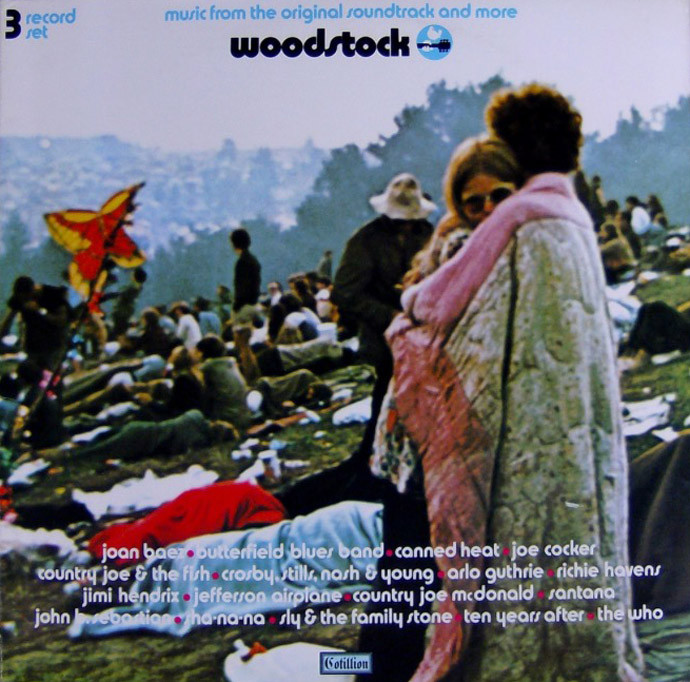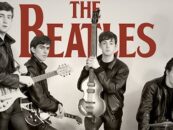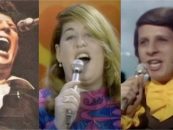 When the team at Atlantic Records sat down to compile the soundtrack album from the filmed account of the 1969 Woodstock Music & Art Fair, they had their work cut out for them. How could they capture the essence of such a momentous event—one that went on for three days and nights—on a record album? The Woodstock concert film, released on March 26, 1970 had, after all, run for more than three hours. How could that possibly be condensed onto a record?
When the team at Atlantic Records sat down to compile the soundtrack album from the filmed account of the 1969 Woodstock Music & Art Fair, they had their work cut out for them. How could they capture the essence of such a momentous event—one that went on for three days and nights—on a record album? The Woodstock concert film, released on March 26, 1970 had, after all, run for more than three hours. How could that possibly be condensed onto a record?
The answer was that it could not, so Atlantic put it out as a three-LP set. Woodstock: Music from the Original Soundtrack and More, released on May 11, 1970, on Atlantic’s Cotillion subsidiary, was embraced by record buyers much as the film had been. It rose to #1 on the Billboard LP chart during the week of July 11, 1970, and remained there for four weeks.
Related: The #1 albums of 1970
The soundtrack couldn’t really lose. After all, presumably each of the attendees would want it as a souvenir—those sales alone would propel the set to platinum level. But its appeal, naturally, was much wider—within a year of the fest, the name Woodstock had already taken on great cultural significance, and the music was of such consistently high quality that any fan of rock and folk music would want to add this one to the collection.
Atlantic made a wise decision not to follow the actual sequence of the performances from the festival on the album. Where singer Richie Havens had actually opened the event on Friday, Aug. 15, here he was relegated to the third position, following John Sebastian’s solo “I Had a Dream”—which captured the spirit of Woodstock so simply and sublimely—and Canned Heat’s “Going Up the Country,” used in the film as intro music to set the scene.
Most of the acoustic music is relegated to the first two discs before the electric rock, soul and blues take over. Most, but not all, of the real heavyweights are represented—the Who, Sly and the Family Stone, Joe Cocker, Santana and, of course, Jimi Hendrix, the last artist to perform.
Related: Woodstock Performers: Where Are They Now?
For whatever reason, the label included one track by Crosby, Stills, Nash and Young, “Sea of Madness,” that was actually recorded the month after Woodstock at New York City’s Fillmore East. They wisely included CS&N’s “Suite: Judy Blue Eyes” from the festival.
In those days, most listeners played record albums on phonographs that allowed them to stack one disc atop the other, so in order to allow for a relatively uninterrupted stream of music, Atlantic placed side six on the flip side of side one, and so forth. For the cover, the label chose a now-iconic photograph of a drained-looking, blanketed couple embracing toward the end of the event, litter all about them.
Bobbi and Nick only lasted one night at Woodstock, and never even got near the stage. They had given it their all trying to get to the festival, ditching their car when traffic became snarled and walking the final two miles. They spent most of their single day there on the hillside where the famous photo was taken. Bobbi died in 2023.
Related: The Woodstock 50 debacle
The Woodstock soundtrack raised the bar for rock concert albums, and did so well that Atlantic, to no one’s surprise, released a two-LP sequel, Woodstock Two, in 1971. Even then, between the two set, several key acts that played the festival were not included, among them Janis Joplin, the Band, the Grateful Dead, Creedence Clearwater Revival, Ravi Shankar, Blood, Sweat & Tears and Johnny Winter.
Most of those omitted artists were finally represented on the four-CD boxed set of Woodstock performances released by Rhino Records on the fest’s 25th anniversary in 1994, and on the even more expansive six-disc set from 2009.
For the 50th anniversary in 2019, Rhino produced a huge, 38-disc boxed set containing nearly every note played at the 1969 festival. The set, limited to 1969 copies, included 432 tracks, 267 of which had never before been released. It quickly sold out.
Watch Santana’s career-making “Soul Sacrifice” from Woodstock
The soundtrack, and other recordings from the festival are available in the U.S. here and in the U.K. here.
- Joe Ely Dies, Country-Rock Musician Toured and Recorded With The Clash - 12/15/2025
- Best Boxed Sets, Collections & Reissues of 2025 - 12/14/2025
- The Top Albums of December 1968 - 12/14/2025






4 Comments so far
Jump into a conversationAlmost 3 months until this festival supposed to take place & it’s getting worse each day that passes. No permits secured yet, no tickets on sale yet & bands are starting to drop out as I write this comment. Mike Lang had years to plan this show & he waited until the last minute to start working. This guy was never a promoter. He fell into shit in 1969 when the 2nd most amazing festival happened (Monterey Pop In 1967 was the 1st) which happened to attract 500,000 of us kids. Lang lucked out, got famous and walked away with a few million bucks. Bill Graham (the greatest rock promoter/Fillmore East & West) is rolling in his grave over this massive phuck up. At this point, you can bet that in a week or two, they will be cancelling this sheet show. Looks like Lang will have to get a real job after all is said and done….big loser!
Look at that last comment! Who would have thought that one year later we would have had no concerts for about 3 months with no prospects for any concerts in the near future.
Carpe Diem, My Brothers and Sisters
I’ve still got my Woodstock Album and it’s in perfect condition and yes I went to the first Monterrey pop festival at Joan Baez place Eselan on the coast California saw Crosby Stills and Nash and Incredible String Band.
The Woodstock Lp proves the validity of “When the legend becomes fact, print the legend”.
Years ago an “honest” version of the soundtrack was released. Correct sequencing of songs actually played at the festival. The booklet made sure you knew. Pretty dull recording compared to the “original”.
Now you know why writers ALWAYS thank their editors.